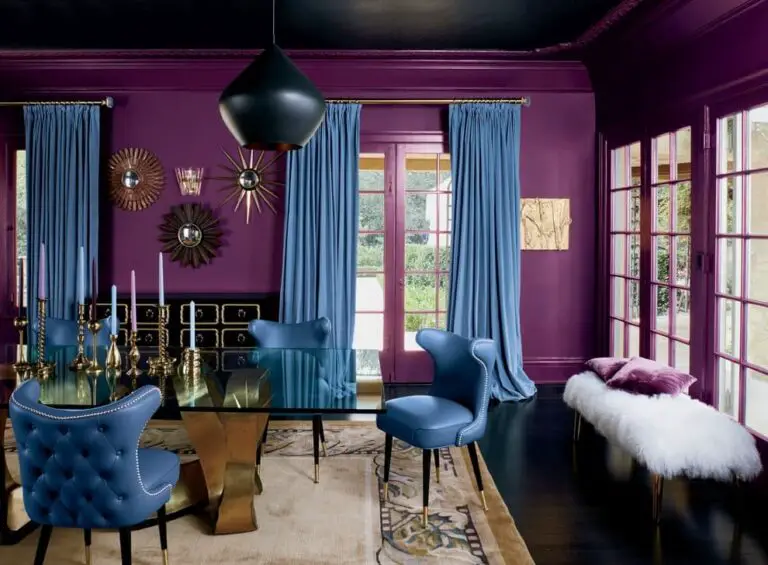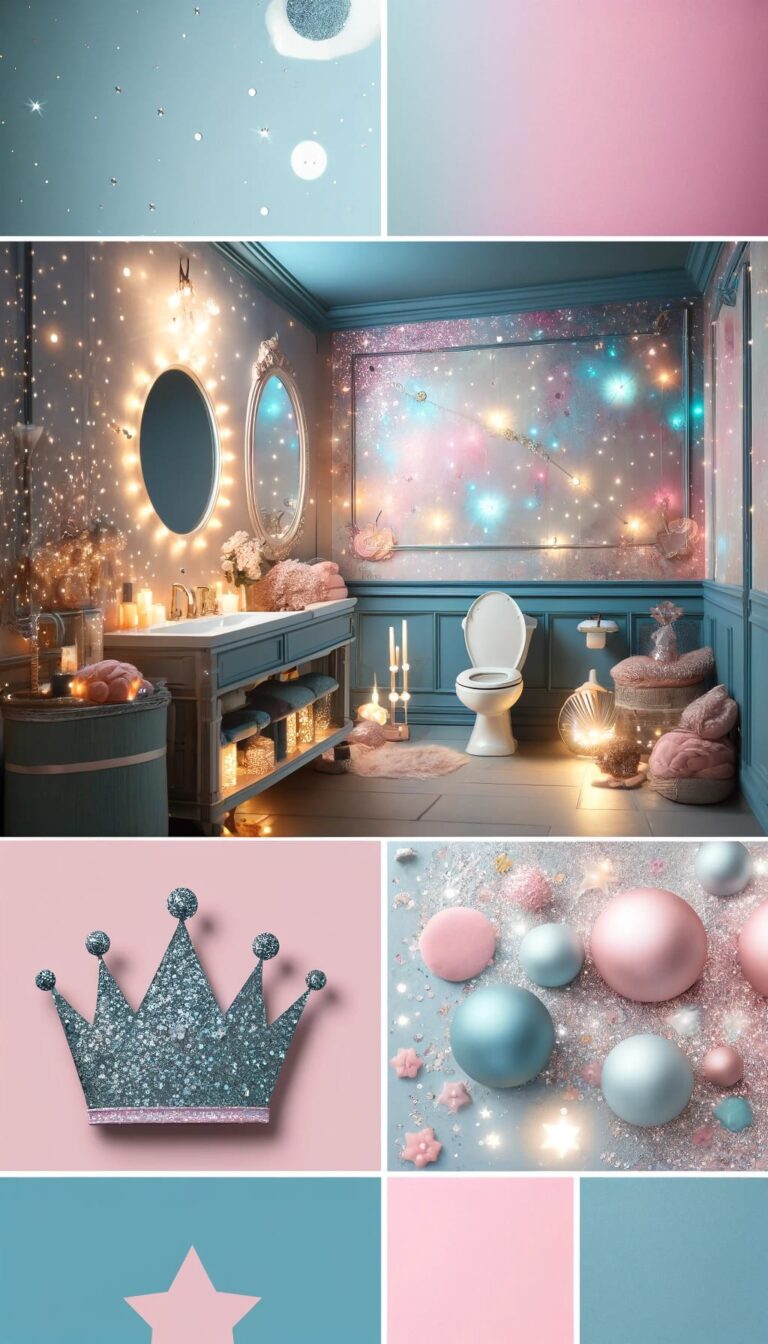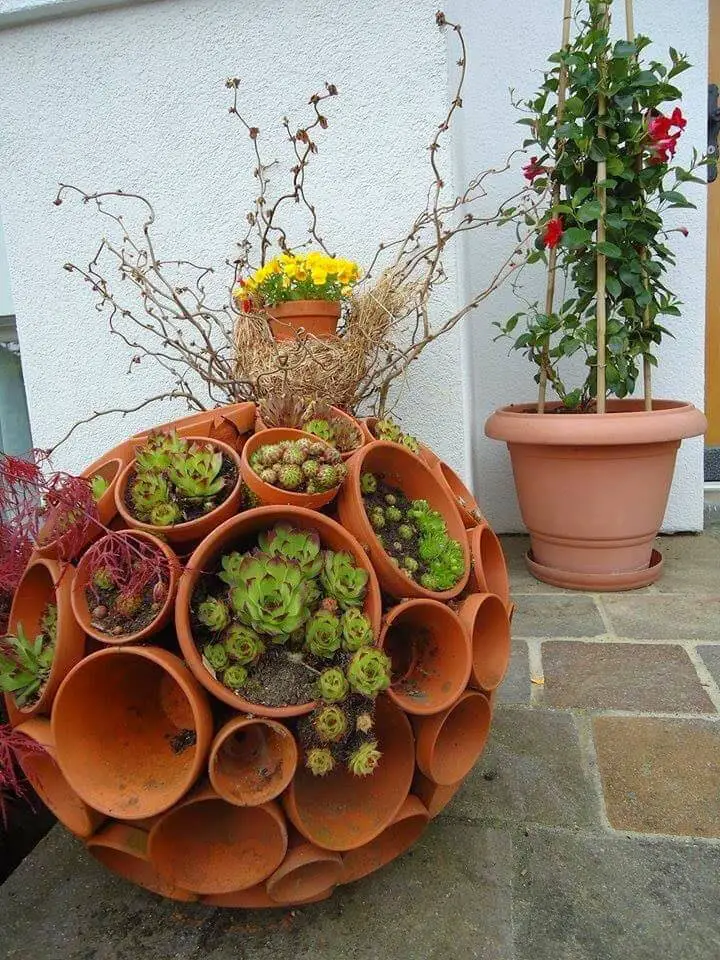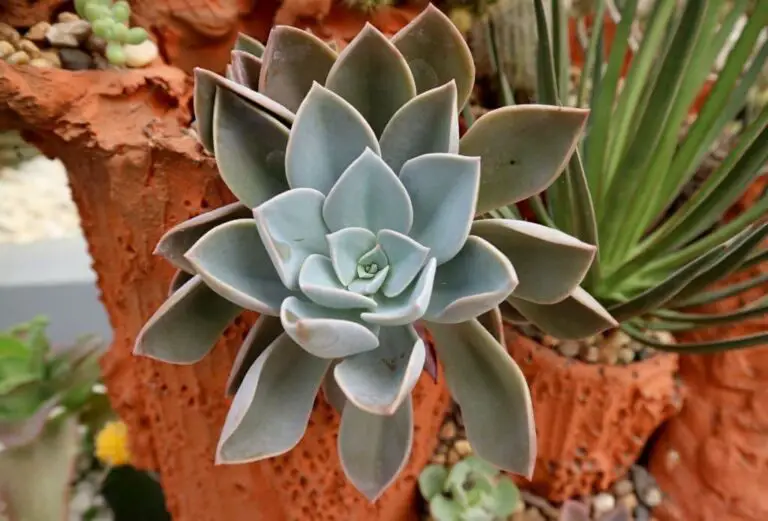14+ Types Of Drywall And What Theyre Used For (Pros And Cons)
When it comes to home repairs and remodeling, one crucial decision homeowners face is choosing the right type of drywall. With numerous options available, each serving a specific purpose, selecting the ideal drywall can be overwhelming. In this article, we’ll delve into the different types of drywall, their characteristics, and provide valuable insights on how to make an informed choice for your project.
From eco-friendly options to specialized products, there’s a wide range of drywalls catering to various needs. For instance, cement board is ideal for areas prone to moisture, while enviroboard offers a more sustainable alternative. Foil-backed drywall provides added insulation, and green board drywall ensures resistance against mold growth. Each type has its unique benefits and drawbacks, making it essential to consider your specific requirements before selecting the right one.
Drywall installation requires attention to detail, from applying joint compound to securing fasteners. The correct tools are also crucial, including automatic sanders, banjos, and utility knives. Thickness is another important factor, with options ranging from 1/4 inch to 5/8 inch. Throughout this article, we’ve covered various types of drywall, their characteristics, and the factors that influence their selection.
Whether you’re a seasoned homeowner or embarking on your first renovation project, understanding these differences will empower you to make informed decisions for your home’s specific needs.
What is drywall?
Interior construction often relies on drywall, a versatile material comprising panels of gypsum plaster nestled between two layers of sturdy paper. Also referred to as gypsum board, wallboard, or sheetrock, its composition is straightforward: gypsum plaster forms the core, flanked by thick paper sheets. This humble material plays a crucial role in building interior walls and ceilings, making it an essential component in many construction projects.
Purposes of drywall.
Drywall, a popular building material, plays a crucial role in constructing walls and ceilings. Comprising gypsum, a soft mineral, sandwiched between paper or fabric layers on both sides, drywall is versatile and suitable for new construction projects as well as repair work. The standard size of drywall sheets is four feet by eight feet, although it’s also available in three-foot by eight-foot and four-foot by ten-foot formats to accommodate various project requirements.
Drywall’s unique characteristics – strength, lightness, and fire resistance – make it an ideal material for constructing walls and ceilings. Moreover, its ease of installation allows for quick and efficient completion of projects. Additionally, drywall can be finished with a wide range of textures, including paint, wallpaper, or tile, offering homeowners and builders a high degree of customization and flexibility.
History of drywall.
In the early 20th century, the United States Gypsum Company pioneered the development of drywall technology with the introduction of Sheetrock in 1916. This initial iteration was a composite of gypsum plaster nestled between two layers of heavy paper. While innovative for its time, this early form of drywall suffered from fragility and limited workability, ultimately failing to gain widespread adoption.
The mid-20th century brought significant advancements with the introduction of fiberglass-based drywall, which supplanted the earlier paper-based version due to its increased strength and ease of use. This new iteration swiftly became the industry standard for construction projects. Fast-forward to today, and modern drywall is characterized by a gypsum plaster core sandwiched between two layers of heavy paper or fiberglass.
As a versatile material, drywall has a multitude of applications beyond its most common uses in creating walls and ceilings for residential and commercial properties. It can also be employed to construct partitions, soundproofing solutions, and fire-resistant barriers.
Types of drywall.
Cement Board.
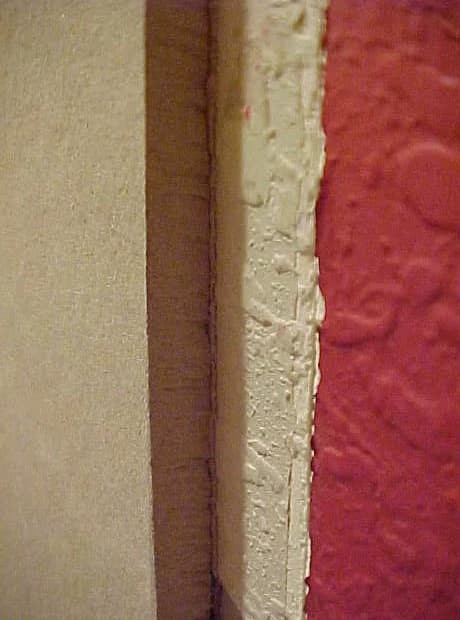
Cement board is a versatile construction material that serves as both an exterior sheathing and tile backing board. Its composition includes Portland cement, aggregate, and fiber reinforcement, making it a reliable choice for various projects. The most common sizes available are four feet by eight feet, with three-foot by five-foot panels also being offered. This durable material excels in high-moisture areas, such as bathrooms, where its resistance to mold and mildew is particularly valuable.
While it can be challenging to work with due to its weight, cement board’s many benefits make it a popular choice for various applications, including backsplashes, countertops, shower surrounds, fireplaces, and floors.
Eco-Friendly Drywall.
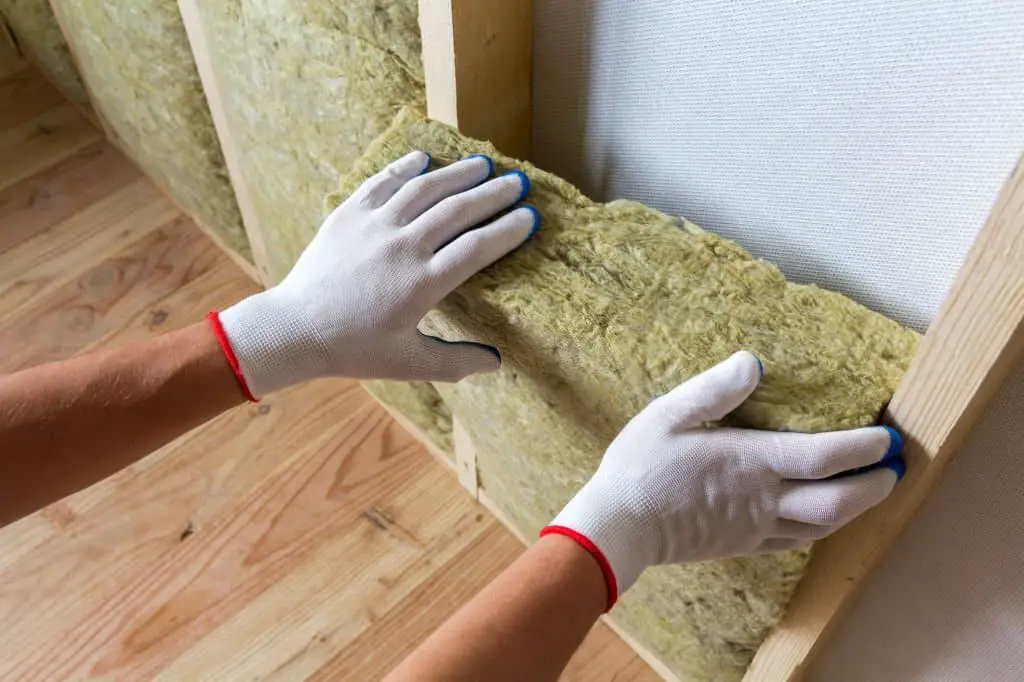
Eco-friendly drywall is a game-changer for those looking to reduce their environmental footprint while still achieving the desired level of quality and durability. Unlike traditional drywall, eco-friendly options eschew harmful chemicals and toxins, instead opting for recycled materials and sustainable production methods. This results in a product that not only benefits the planet but also offers numerous advantages for its users.
In terms of applications, eco-friendly drywall is an excellent choice for both commercial and residential projects. Its durability and fire-resistance make it particularly well-suited for high-traffic areas. Installation is also relatively straightforward, allowing it to be easily integrated into a wide range of settings. For those seeking even more sustainable options, recycled paperboard and bamboo are two notable alternatives.
Recycled paperboard, crafted from reclaimed newspaper and other paper products, offers a unique blend of durability and eco-friendliness. Bamboo, on the other hand, is a fast-growing grass that boasts remarkable strength and renewable qualities, making it an attractive choice for drywall applications. Despite the added cost – roughly $15 per square foot – many see eco-friendly drywall as a worthwhile investment in their health and the environment.
The pros of this product far outweigh its cons, including increased sustainability, reduced chemical exposure, and improved indoor air quality. Of course, there are some drawbacks to consider. Eco-friendly drywall may be more expensive than traditional options, and its availability can vary depending on your location. Nevertheless, for those prioritizing environmental responsibility and a healthier home, the benefits of eco-friendly drywall far outweigh any potential drawbacks.
Enviroboard.
Enviroboard is a pioneering innovation in the world of drywall, crafted from recycled materials such as paper, cardboard, and wood fiber. This eco-friendly product boasts impressive environmental credentials, making it an attractive option for green construction projects. Its unique composition also lends itself to exceptional strength and durability, capable of withstanding various applications. When considering Enviroboard, it’s essential to weigh the pros against the cons.
On the plus side, its production process requires significantly less energy and resources compared to traditional drywall, making it a more sustainable choice. However, this eco-friendly approach may come at a higher cost, necessitating careful budgeting and decision-making. Furthermore, Enviroboard is more prone to mold and mildew growth in humid environments, highlighting the need for meticulous maintenance and care to prevent these issues.
Ultimately, while Enviroboard presents some trade-offs, its environmental benefits and impressive performance characteristics make it an intriguing option for those seeking a greener alternative.
Eco Rock.
Eco Rock is a revolutionary building material that’s gaining popularity due to its eco-friendly features. Comprising recycled paper and cellulose fibers, this sustainable option boasts durability and ease of installation, making it an excellent choice for both new construction and remodeling projects. Whether you’re renovating the kitchen, bathroom, or laundry room, Eco Rock is a versatile solution that can be used anywhere in the house.
While it has its advantages, it’s essential to weigh the pros and cons before making a decision. On the plus side, Eco Rock offers a more environmentally friendly alternative to traditional drywall, is fire resistant and mold resistant, and lighter in weight, which simplifies installation.
However, it also comes with some drawbacks, including a higher price tag compared to traditional drywall, reduced strength that may lead to cracking or denting, and increased porosity that can affect paint adhesion and stain resistance.
Foil-Backed Drywall.
Foil-backed drywall is a unique type of wallboard that features a thin layer of aluminum foil bonded to one side. This innovative design provides a natural moisture barrier, preventing mold and mildew from growing on the surface. The foil’s effectiveness makes it an ideal choice for areas prone to high humidity, such as bathrooms, laundry rooms, and kitchens.
When considering foil-backed drywall for your home, it’s essential to ensure the wallboard is properly sealed before installation to prevent compromising the moisture barrier. Additionally, this type of drywall has some limitations: it’s not as fire-resistant as regular drywall, so extra precautions are necessary in areas where there’s a risk of fire. Furthermore, foil-backed drywall can be more expensive than traditional options.
One of the key benefits of foil-backed drywall is its ability to reflect heat away from the home, making it a valuable energy-saver during summer months. It also provides an additional layer of protection against mold and mildew growth, which can be a significant advantage in humid environments. However, this type of drywall may present some challenges: it can be more difficult to work with than regular drywall, and its higher cost may make it less accessible to some homeowners.
Ultimately, the decision to use foil-backed drywall depends on weighing its pros and cons against your specific needs and circumstances.
Green Board Drywall (Moisture-resistant drywall).

Moisture-resistant drywall is a specially designed type of drywall that resists the effects of moisture. Its primary application areas include bathrooms, kitchens, and other spaces where humidity levels are high or there’s a risk of water damage. This type of drywall is made from paperboard treated with chemicals to repel moisture, covered by a layer of fiberglass or another waterproof material.
While it’s more expensive than regular drywall, its benefits justify the investment for homeowners concerned about water damage. The cost of moisture-resistant drywall varies depending on sheet size and thickness. On average, a single sheet costs between $12 and $15. Thicker sheets are naturally more expensive. Green board drywall is often used in basements, bathrooms, or areas where humidity levels are high.
Some notable advantages of using moisture-resistant drywall include its effectiveness in resisting moisture, reduced risk of water damage, and ease of installation. However, it does have some drawbacks. For instance, green board is heavier than regular drywall, requiring two people for installation. Additionally, it’s not as fire-resistant as standard drywall, making it essential to use fire-resistant materials on top, such as tile or bricks, in areas prone to fires.
Mold-resistant drywall.
Mold-resistant drywall, a type of construction material, boasts unique properties that enable it to withstand the growth of mold and mildew. This is achieved through the use of a specialized paper coated with an acrylic resin and treated with fungicides, which collectively form a formidable barrier against fungal proliferation.
In terms of installation costs, the price of mold-resistant drywall can fluctuate depending on the scope and size of your project.
As a general rule, you can expect to pay between $0.50 and $0.70 per square foot for materials and labor. This estimate typically includes the cost of the drywall itself, as well as any necessary reinforcement.
While mold-resistant drywall presents several benefits, it also has its drawbacks.
On the positive side, this material can effectively prevent mold growth in your home, boasts enhanced durability compared to regular drywall, and may be easier to clean if mold does manage to develop on its surface. However, the increased cost of mold-resistant drywall, which is typically higher than that of standard drywall, must be taken into consideration.
Additionally, this material may not completely eliminate the risk of mold growth in your home, and it can be more challenging to find suppliers offering high-quality products.
Paperless drywall.
Paperless drywall is a game-changer in the world of construction, offering a unique solution to traditional drywall’s limitations. Instead of using paper backing, it relies on a fiberglass mat to hold the gypsum in place, making it more resistant to water and mold growth. This innovative design also makes installation easier, as there’s no risk of paper tearing. The cost of installing paperless drywall varies depending on the scope of your project, but on average, it costs between $0.50 and $0.
70 per square foot. For a typical 500-square-foot room, this translates to a price range of $250 to $350. While there are pros and cons to consider, some notable advantages include its fire-resistance, mold-resistance, and the fact that it doesn’t require painting or sanding after installation. The downside is that it’s more expensive than traditional drywall, requires specialized tools for installation, and can be challenging to find in stores.
Plasterboard (Blue board drywall).
Blue board drywall is a specialized type of plasterboard that serves as the foundation for veneer plaster installations. Its composition consists of a gypsum core wrapped in paper facings, and its distinctive blue color indicates treatment with water-resistant chemicals. This durable material is often employed in areas prone to moisture, such as bathrooms, kitchens, and exterior walls, where it offers enhanced resistance to fire compared to standard plasterboard.
The treated board’s increased moisture tolerance also makes it an attractive option for regions experiencing high humidity or heavy rainfall. The installation cost of blue board drywall varies according to the size of the area being worked on. Generally, a single sheet costs around $15.00; however, larger rooms may require multiple sheets to achieve proper coverage. Despite its advantages, blue board drywall also presents some drawbacks.
While it is relatively easy to install and provides good soundproofing properties, it is not as durable as other types of drywall and can be more challenging to work with due to its unique characteristics.
Purple drywall.
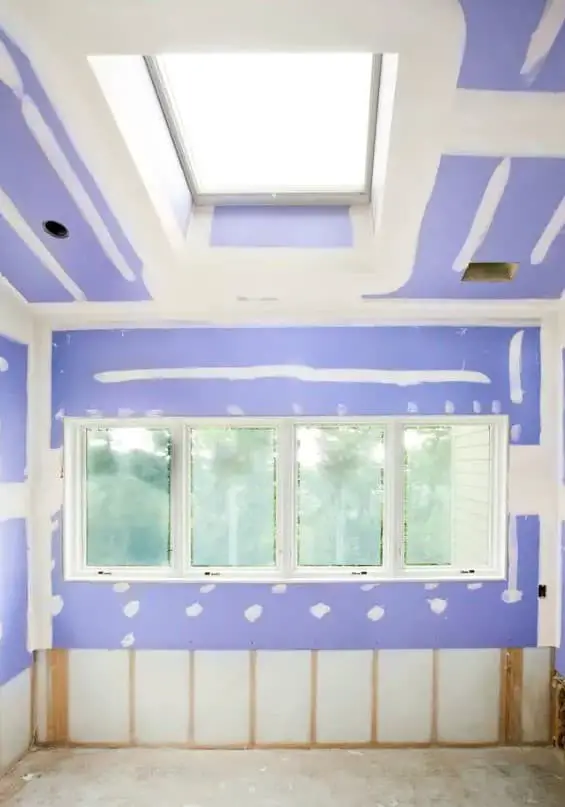
Purple drywall is a type of building material commonly used in areas prone to moisture, such as bathrooms and kitchens. Its unique feature lies in its mold-resistant paper coating, which helps prevent the growth of unwanted microorganisms like mold and mildew. Additionally, purple drywall boasts impressive resistance to both fire and water, making it an excellent choice for these humid environments.
When it comes to pricing, the cost of purple drywall depends on several factors including the brand, thickness, and size of the sheets. Typically, a standard sheet can be had for between $15 and $20. However, if you require thicker or larger sheets, the price will naturally increase.
Regular drywall (White board).
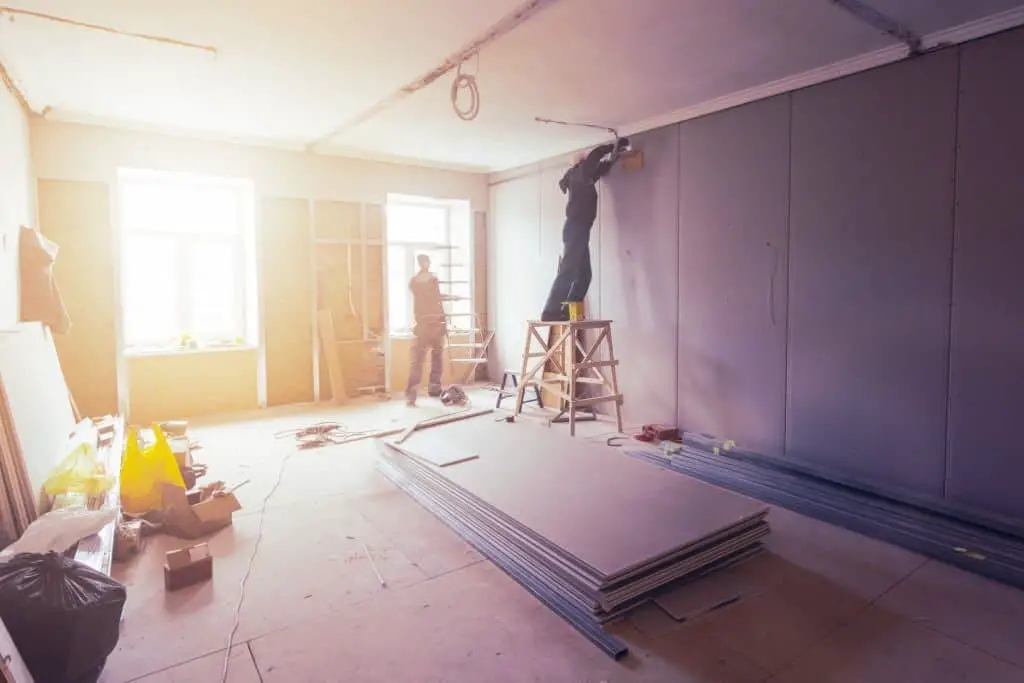
Regular drywall, also known as plasterboard, is a ubiquitous construction material used to create walls and ceilings. Its name stems from the fact that it’s made of gypsum, a mineral capable of absorbing water. The standard issue is white or off-white in color, featuring a smooth surface. Comprising two sheets of paper glued to either side of a plaster core, drywall is employed in both residential and commercial construction endeavors.
Pricing for regular drywall varies depending on the brand, size, and thickness of the sheet. For a standard issue, expect to pay between $0.30 and $0.40 per square foot. However, should you require thicker or specialized sheets, prices will naturally increase. Installation costs will also fluctuate according to job complexity.
The pros and cons of regular drywall are worth noting:
– It’s the most widely used type of drywall.
– Its gypsum plaster core is sandwiched between two thick sheets of paper.
– Regular drywall boasts impressive fire resistance and soundproofing properties.
– Installation and painting processes are relatively straightforward.
– However, regular drywall is susceptible to damage and lacks the durability found in other types of drywall.
Soundproof drywall.

Soundproof drywall is a unique type of wall covering that has been engineered to dramatically reduce noise levels. Its core material is specifically designed to absorb sound waves and prevent them from transmitting through walls. As a result, it’s typically thicker than standard drywall, which further contributes to its exceptional noise-blocking capabilities.
While soundproof drywall offers a highly effective solution for reducing unwanted noise in homes or offices, it’s essential to weigh the advantages against the potential drawbacks. On the plus side, this specialized material can significantly minimize external and internal noise disturbance, making it an attractive option for those seeking quieter living spaces. Additionally, its denser composition renders it more resilient and durable.
However, there are some notable downsides to consider. Compared to regular drywall, soundproof drywall can be a more significant investment, which may be a constraint for some budgets. Furthermore, the installation process may require specialized expertise to ensure optimal performance, as improper installation can compromise its noise-reducing abilities.
Type X Drywall (fire-resistant drywall).
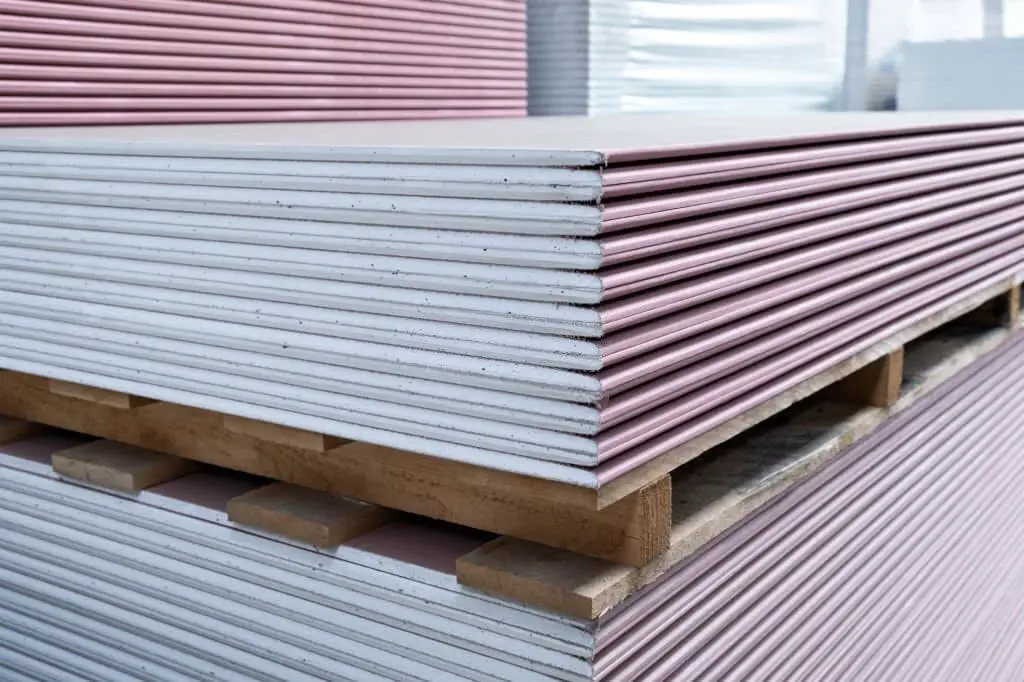
Type X drywall, also known as firecode drywall, is a type of fire-resistant drywall designed to resist fires for up to four hours. Its core consists of gypsum surrounded by fiberglass matting and covered with paper or foil backing. This specialized drywall is commonly used in various applications such as fire-rated walls, ceilings, and fire-stops, as well as party walls. The price of Type X drywall varies depending on the size and thickness, but a standard sheet typically costs around $12.00.
While it may be more expensive than regular drywall, its added protection is a valuable asset. One of the key benefits of using Type X drywall is its ability to provide extra protection in the event of a fire, containing the spread of flames and preventing damage to structures. Additionally, its impact-resistance makes it an excellent choice for areas prone to natural disasters or accidental impacts.
However, some drawbacks include increased cost, weight, and difficulty in handling compared to regular drywall. Ultimately, whether Type X drywall is worth the investment depends on individual priorities and circumstances.
VOC-absorbing drywall.
VOC-absorbing drywall is a specialized type of drywall that’s designed to absorb volatile organic compounds (VOCs), which are gases released into the air from certain materials like paint and cleaning products. Prolonged exposure to VOCs can be harmful to one’s health, making it crucial to minimize their presence in indoor spaces.
In terms of cost, VOC-absorbing drywall tends to be pricier than regular drywall, with small room projects typically ranging from $200 to larger-scale projects costing upwards of $1000. The good news is that this type of drywall has become increasingly common and can usually be found at major home improvement stores.
There are several advantages to using VOC-absorbing drywall in one’s home.
Firstly, it helps reduce the overall level of VOCs in indoor air, which is particularly important for individuals with sensitivities or those living in areas with high outdoor pollution levels. Secondly, it can significantly decrease cleaning time as it absorbs VOCs before they settle on surfaces, causing issues.
While there are some benefits to using VOC-absorbing drywall, there are also a few potential drawbacks to consider.
Firstly, it’s essential to acknowledge that this type of drywall is not entirely effective at removing all VOCs from the air. Secondly, it can be more expensive than traditional drywall options. Finally, its effectiveness may be compromised in homes with high humidity levels.
Drywall Materials.
When embarking on a drywall project, homeowners and professionals alike are often faced with a plethora of options when it comes to selecting the right material. Each type has its unique characteristics, benefits, and drawbacks, making it crucial to understand their differences in order to make an informed decision. The following are some of the most commonly used types of drywall materials, each offering distinct advantages and disadvantages.
Drywall joint compound.
Drywall joint compound serves a dual purpose in drywall construction – filling gaps between panels and attaching new pieces to existing walls. Its putty-like texture makes it an ideal solution for these tasks. This versatile material comes in two variants: pre-mixed and powdered. While pre-mixed compounds offer the convenience of no-water mixing, their powdered counterparts require a simple water-adding step.
Interestingly, although powder joint compound demands more effort, its lower cost compared to pre-mixed alternatives makes it an attractive option for many builders.
Tape.
Tape is a versatile adhesive material that excels at bonding two surfaces together. Its pressure-sensitive properties allow it to be crafted from an array of substrates such as paper, cloth, plastic, or metal foil. This multifaceted material finds its way into numerous applications, including securing envelopes, binding books, and attaching objects to walls or other surfaces.
nThe tape family is vast and diverse, encompassing various types such as masking tape, Scotch tape, duct tape, electrical tape, packing tape, and adhesive tape, each with its unique characteristics and uses.
Fasteners.
Hardware fasteners play a crucial role in binding multiple objects together, creating secure connections that withstand various types of stress and strain. These versatile devices come in diverse forms, ranging from simple clips used to seal containers like bags, boxes, or envelopes, to more complex mechanisms designed to keep flexible materials like cloth, paper, or plastic in place.
In addition, specialized fasteners, such as bread clips, cater to specific needs, ensuring that items remain securely tied and protected.
Corner Bead.
Corner reinforcement is crucial in drywall applications, which is where corner beads come in – thin strips of metal or plastic designed to fortify the outside edges of drywall panels. The primary function of these strips is to prevent cracking and ensure a seamless finish. Within this category, there are two distinct types: paper-faced and vinyl.
Paper-faced corner beads boast a paper backing that facilitates effortless joint compound application and enables the creation of smooth, professional-looking corners. In contrast, vinyl corner beads are a more budget-friendly option often employed for repairing damaged or worn-out corners.
Drywall tools
Automatic Drywall Sander.
Finishing drywall projects just got a whole lot easier with the introduction of automatic drywall sanders. These power tools are designed to make the process faster and less labor-intensive, ideal for large-scale projects or those who simply don’t enjoy manual sanding. While there may be various types of automatic drywall sanders on the market, they all operate on a similar principle. To get started, you’ll need to attach a dust collector to your sander, ensuring a clean and dust-free workspace.
Next, choose the right sandpaper for your project – coarser grits are best suited for rough or textured areas, while finer grits deliver smooth finishes. Finally, follow the manufacturer’s guidelines to attach your selected sandpaper to the sander.
Banjo (drywall taper).
A banjo is a fundamental tool for any drywall taper, serving as an essential component in the application of joint compound to walls and ceilings. This versatile device comprises three primary components: a handle, a roller, and a tray. The handle is integrally connected to the roller, which is itself coated with joint compound. Simultaneously, the tray provides a contained environment for the compound, allowing for smooth and even application across surfaces.
Bazooka.
For those looking to tackle drywall projects themselves, Bazooka is an indispensable tool that makes the process smoother. This innovative device enables efficient application of drywall mud and tape on walls, streamlining the DIY experience. With its user-friendly design and affordable price point, Bazooka is an ideal choice for anyone embarking on a self-sufficient drywall venture.
Drywall Screw Gun.
A drywall screw gun is an innovative battery-powered tool that simplifies and accelerates the process of driving screws into drywall. This versatile device enables you to effortlessly attach drywall to metal studs or wood framing, as well as secure furring strips – a crucial step in preparing for the final layer of drywall installation.
Drywall Hammer.
A crucial component in any DIY enthusiast’s arsenal, the drywall hammer is a versatile tool designed to drive nails into drywall or plasterboard with precision and ease. Its distinctive long and slender handle allows for optimal control, while its flat, rectangular head – typically crafted from steel or brass – provides the necessary force to secure those pesky nails in place.
With its widespread adoption across various construction projects, it’s little wonder why the drywall hammer stands out as one of the most essential tools for anyone tackling wall-related endeavors.
Drywall Knife.
The drywall knife, also commonly referred to as a utility knife or box cutter, is an indispensable tool for any DIY enthusiast or professional working with drywall. Its primary function is to efficiently cut and score the material, making it an essential component in various construction, renovation, and repair projects.
Characterized by its distinctive handle and blade design, the drywall knife boasts a unique feature – its blade is sharpened on both sides, allowing for precise cuts and easy maneuverability. The handle, typically crafted from plastic, wood, or metal, provides a comfortable grip and control during use.
Drywall Panel Lift.
A drywall panel lift is a valuable tool for tackling large-scale drywall installation projects on your own. This specialized equipment enables you to raise and support substantial sheets of drywall with ease, eliminating the need for additional help. Its versatility also extends to repairing damaged sections or replacing compromised panels. The innovative design relies on a hydraulic mechanism that controls a platform featuring adjustable jaws that securely grip the edges of the panel.
A system of supports ensures the panel remains stable during lifting and lowering operations.
Drywall Saw.
A drywall saw is a purpose-built tool designed specifically for cutting through drywall. Its design closely resembles a standard handsaw, but with some notable differences – its blade is thinner and features smaller teeth than a typical saw. This unique combination allows it to effortlessly cut through the paper surface of drywall without damaging or tearing it. The average length of a drywall saw’s blade is around six inches.
The handle, typically crafted from plastic or wood, is engineered to provide a comfortable grip for users. Some models boast an innovative trigger mechanism that initiates blade movement with a simple pull, while others require a push-button activation on the side of the handle.
Framing Square.
A carpenter’s trusted companion, the framing square is a versatile tool that has earned its place in the toolbox for centuries. Its L-shape design allows it to serve multiple purposes, with the long arm functioning as a measuring device and the short arm acting as a ruler. This multifaceted tool is also commonly referred to as a steel square or carpenter’s square.
The framing square’s versatility extends far beyond its initial purpose, as it can be used to locate the center of a board, mark precise 90-degree angles, and even measure and mark 45-degree angles. Its applications don’t stop there – it can also be employed to measure and mark joist spacing at 24-inch on center intervals, providing a reliable guide for framing projects.
Hand sander.
A hand sander is a versatile power tool designed for smoothing out surfaces by sanding them. Its portability and range of attachments enable users to work efficiently on various materials, including wood, metal, plastic, and drywall. The orbital sander is the most widely used type, featuring a circular pad that spins and vibrates as it moves. This motion helps loosen paint or other materials, making removal easier.
In contrast, belt sanders employ a continuous strip of sandpaper that glides along in a linear motion. As a result, they’re often employed for stripping paint or material from larger surfaces like floors and walls, where their extended reach is particularly useful.
Mud Pan.
A drywall finisher’s go-to companion, the mud pan serves as both a holding vessel and mixing container for joint compound. This indispensable tool is crucial for any professional or DIY enthusiast looking to achieve seamless joints and smooth finishes. Not only does it enable efficient application of the compound, but also allows for easy mixing and manipulation, making it an absolute must-have in every drywall finisher’s arsenal.
Pencil.
The humble pencil is a staple in any drywall enthusiast’s toolkit. Its primary function is to create precise lines on walls and ceilings with ease. While pencils do come in various sizes, the six-inch variety is by far the most popular choice among professionals.
Utility Knife.
A utility knife, also known as a box cutter, carpet knife or Stanley knife, is a versatile cutting tool designed for general-purpose slicing, trimming and cutting tasks. Characterized by its folding design, which allows the blade to retract into the handle when not in use, thereby ensuring user safety. Some models feature a locking mechanism that enables extended use, while others have replaceable blades or are designed to be disposable, offering flexibility and convenience.
Drywall thickness.
The typical thickness of drywall is ½ inch, with other options available including ¼ inch and ⅝ inch. While the thinnest drywalls tend to be only ¼ inch thick, thicker panels can reach up to ½ inch or even more. Notably, commercial construction often employs drywalls measuring ⅝ inch or greater. The choice of drywall thickness ultimately depends on a variety of factors, including the nature of the project, local climate conditions, and the type of joint compound used.
Each of these considerations can influence the optimal thickness for a given project.
1/4 inch.
The most widely utilized thickness of drywall, this particular variant measures just enough to make it an ideal choice for constructing walls and ceilings in both residential and commercial settings. Its slender profile also makes it remarkably easy to handle and manipulate during the installation process, a significant advantage when compared to thicker options.
3/8 inch.
In terms of dimension, the majority of drywall used in residential building projects has a thickness of 3/8 inch. Notably, this specific thickness is also the minimum required for ceiling applications.
1/2 inch.
A versatile material, it finds widespread application in both residential and commercial settings, such as walls and ceilings of homes and offices. Additionally, its uses extend to certain industrial scenarios.
5/8 inch.
This versatile material is a popular choice for both residential and commercial projects, particularly when it comes to applying finishes to walls and ceilings. Whether you’re embarking on a new construction venture or looking to revamp an existing space through remodeling, this product plays a crucial role in the process.
FAQs about Drywall
How Much Drywall Do You Need?
As you embark on your home renovation, calculating the amount of drywall needed can be a crucial step. To ensure accuracy, start by measuring the length and width of each wall in the room. Next, multiply these dimensions together to determine the square footage of each wall. Then, add up the square footage of all walls to calculate the total area that needs to be covered. Once you have this total, divide it by 32, which is the average size of a sheet of drywall.
Finally, round up to the nearest whole number to get the total number of sheets required for your project. This simple process will help you avoid underestimating or overestimating your drywall needs, ensuring a smooth and successful renovation.
What is the difference between sheetrock and drywall?
While sheetrock and drywall are often used synonymously, they actually have distinct differences. Sheetrock is a trademarked brand name owned by US Gypsum Company, specifically referring to their type of drywall product. Drywall, on the other hand, is a broader term that encompasses various wallboard products made from gypsum, a mineral commonly found in sedimentary rock. In essence, all sheetrock is drywall, but not all drywall is necessarily sheetrock.
The manufacturing process for drywall involves calcining gypsum to remove excess water content, followed by grinding the resulting powder into a fine consistency. This powdered gypsum is then mixed with water and other additives like fibers to create a workable slurry. The mixture is subsequently fed between two layers of heavy paper, pressed into sheet form, and allowed to dry.
Once fully dried, the sheets are typically cut to standard sizes, such as four feet by eight feet, to produce the familiar drywall panels.
Which is better sheetrock or gypsum board?
While neither sheetrock nor gypsum board can be unequivocally deemed superior, their unique characteristics make each suitable for specific applications. Sheetrock’s affordability makes it a favored option among homeowners on a budget, its low cost being a significant advantage. In contrast, gypsum board boasts enhanced durability and fire-resistance, rendering it the preferred choice for those prioritizing safety.
Ultimately, the choice between these two materials hinges on personal preference, budget constraints, and specific project requirements.
Is gypsum better than drywall?
Drywall, commonly referred to as plasterboard, is a composite material comprising gypsum plaster sandwiched between two layers of paper. Its primary application is in constructing interior walls and ceilings. The core component, gypsum, is a soft sulfate mineral characterized by the chemical formula CaSO₄·nH₂O. While various types of drywall exist, gypsum-based varieties are most prevalent. Gypsum drywall, in particular, features a layer of gypsum plaster flanked by two paper layers.
Its utility lies in creating interior walls and ceilings. Notably, gypsum drywall exhibits enhanced fire resistance and soundproofing capabilities compared to other types, making it the preferred choice for residential construction.
Why is there plywood behind drywall?
Plywood’s versatility and benefits make it a popular choice to be used behind drywall. One of its primary functions is to provide added stability to the wall, thereby preventing cracks from forming. This also enables a smoother taping and mudding process. Furthermore, plywood serves as an effective sound barrier, significantly reducing noise transmission through walls.
Another crucial reason why plywood is often used behind drywall is its exceptional fire-resistance properties.
In contrast to drywall, plywood provides a robust barrier that can slow down the spread of fire, offering an added layer of protection in the event of an emergency.
What type of drywall is used for ceilings?
Regular drywall, the most commonly used type for ceilings, is a composite material comprising two layers of paper bonded together with a layer of gypsum-based plaster. Its affordability and simplicity of installation make it a popular choice for residential construction, particularly in home building projects.
What thickness drywall is used for ceilings?
When it comes to choosing the right thickness of drywall for your ceiling, there are several options to consider. The most common thicknesses used for ceilings are 1/2 inch and 5/8 inch, but other thicknesses are also available. The type of ceiling you have will influence the thickness of drywall you need to use. For instance, if you’re dealing with a drop ceiling, you’ll typically require thinner drywall that can fit snugly into the grid.
On the other hand, vaulted ceilings often demand thicker drywall for added support.
What type of drywall is used for a bathroom?
When it comes to choosing the right type of drywall for your bathroom, the straightforward answer is regular drywall. However, there are some essential considerations to keep in mind. One of its primary advantages is that it’s made from gypsum, a naturally fire-resistant material that makes it an excellent choice for bathrooms, which often have high humidity levels. Moreover, regular drywall is also less prone to mold and mildew growth, making it a suitable option for most bathroom applications.
Nevertheless, if you reside in an area with extremely humid conditions, you may want to consider alternative options. Greenboard, another type of drywall, is specifically designed for bathrooms due to its water-resistant properties, making it an ideal choice for environments where moisture is prevalent.
What type of drywall is used for the garage?
When it comes to drywall options for your garage, there are several types to consider. However, the most popular choice is green board – a type of moisture-resistant drywall specifically designed for high-moisture areas like bathrooms and laundry rooms. Its durability makes it an excellent option for garages as well, capable of withstanding the occasional spill or leak.
The unique feature that sets green board apart from other types of drywall is its paperboard core coated with a water-resistant material, which effectively prevents moisture absorption.
What type of drywall is used for the basement?
When it comes to selecting drywall for a basement renovation, homeowners have several options to consider. The most common types of drywall are regular, fire-resistant, and waterproof, each with its unique characteristics that impact the overall project. Regular drywall is a cost-effective solution that works well for general-purpose use, while fire-resistant drywall provides an added layer of safety in high-risk areas like kitchens or laundry rooms.
Waterproof drywall, on the other hand, is ideal for spaces prone to moisture like bathrooms or basements with poor drainage. It’s crucial to choose the right type of drywall based on your specific needs and priorities.
Conclusion
When it comes to selecting the perfect drywall for your project, it’s essential to understand the diverse range of options available. Each type of drywall has its unique characteristics, advantages, and limitations. The choice ultimately boils down to your specific requirements and personal preferences. By weighing the pros and cons of each option, you’ll be well-equipped to make an informed decision that meets your project’s needs.
Related Posts
When designing a space, the choice of ceiling and wall colors can greatly impact the overall aesthetic. For instance, pairing an alabaster wall with the right ceiling color can create a harmonious atmosphere. Similarly, selecting the perfect hue for curtains to complement yellow walls can elevate the room’s style.
On the other hand, considering the implications of spray foam insulation on your walls and mastering techniques for creating flawless drywall finishes are also crucial aspects to consider. Ultimately, achieving cohesive design involves striking the right balance between these elements.



